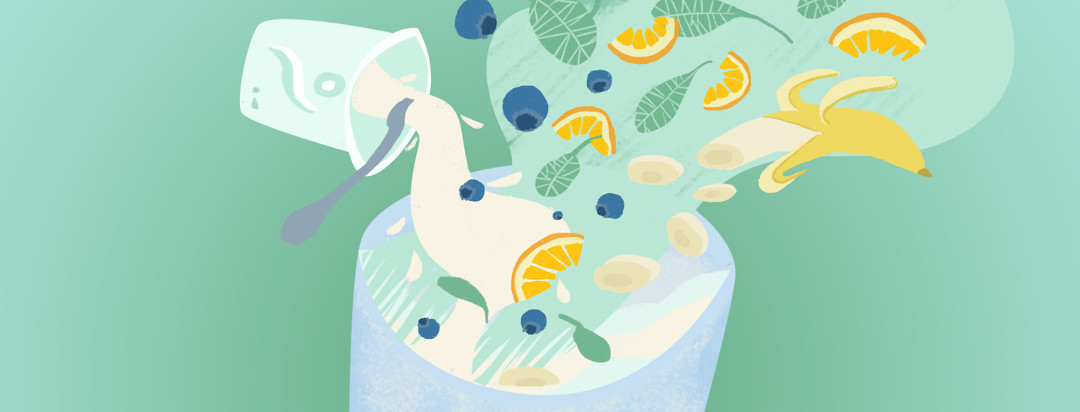Clean Eating - What is it and Can it Help Me?
Clean eating can have a variety of meaning to different people.
What is clean eating?
While there is no official definition from the USDA or the FDA defining what clean eating means, people have assigned a wide range of definitions to the term. For some, clean eating means eating food free from chemical additives and preservatives. For others, it may mean eating food that is only ‘natural’ or non-GMO. Clean eating can also mean eating food that is organic or minimally processed. While the definitions of clean eating vary widely, the reasons people strive to be clean eaters stem from a value system based in a desire for authenticity and truth when it comes to food manufacturing processes and labeling, and a desire to have autonomy in what we feed our bodies.
How to navigate clean eating
Keep reading to learn about how to navigate the world of clean eating, and find out how being a conscious clean eater can help you on the path to being healthier and feeling your best.1
Start with defining what clean eating means to you
Since clean eating can mean a range of different things, sit down and think about how you define healthy food. When it comes to food, what do you feel matters most and what do you want clean eating to mean? It could be as simple as eating more foods with less added salt or sugar, eating more whole grains in place of refined, eating more local or sustainably sourced food, or preparing more meals from scratch. Take out a pen and paper and jot down what clean eating looks like to you.
TIP: Make clean eating manageable for you! If completely upending your current eating pattern to be perfectly ‘clean’ sounds daunting, come up with one or two realistic and manageable ways you can make your food choices cleaner. For example, you may start with choosing yogurt or cereal that don't add fillers like corn starch or Red Dye #3. Once you’ve mastered your first goal, come up with a new one! Remember, it’s the small changes lead to lasting, sustainable change over time.
Once you’ve decided what clean eating is to you, here are some expert tips to help you be a conscious and informed consumer as you navigate the grocery store aisles.
Be a savvy shopper and watch out for clean eating jargon
Shopping smart will help you follow your clean eating plan, but beware of marketing claims that may be unfounded. For example, terms such as detoxifying, healthy, or artisan are common marketing terms that are not regulated or based on research, so do not necessarily mean that a food is healthier.1
Do look at the nutrition facts and ingredients lists
Instead of relying on packaging claims, refer to the nutrition facts label and the ingredients list. Generally, foods lower in saturated fat, sodium, and added sugar, and higher in whole grains, healthy fats (mono and polyunsaturated) or fiber will be healthier options.
Be careful of the ‘all or nothing’ mentality
When adopting a clean eating plan, it can be tempting to adopt an all or nothing mentality or to come up with certain clean food rules. However, be cautious with adopting a black and white mentality – when it comes to clean eating, there are many grey areas. For example, here are three food rules that do have valid aspects, but could lead you astray:1
- Clean eating means avoiding all processed foods — Cooking and prepare whole foods is a wonderful way to connect with your food and to have faculty over and knowledge of what you are eating. However, this does not mean that all processed foods are unhealthy, and choosing the right processed foods can be great options when you’re tight on time and need something to grab-and-go. How much food is processed also varies widely, and most foods are processed to some degree. When choosing processed foods, look for ones that contain whole grains, veggies, and fiber, and are lower in sodium and added sugar. For meats, stick to lean and fresh, avoiding lunch meats. But canned tuna or salmon in water are healthy choices.
- Clean eating means avoiding any ingredient I can’t pronounce — While ingredient lists can be confusing, the ingredient you don’t recognize does not necessarily mean it’s unclean. If you’re not sure what an ingredient is, look it up!
- Fewer ingredients is better/Fewer ingredients is not always better-what really matters is what those ingredients are.
Rest assured
If you’re feeling overwhelmed with feeding yourself and your family the cleanest food possible, you’re not alone. However, keep in mind that the FDA is responsible for ensuring our food is safe. They regulate the safety of ingredients in our food and any ingredient deemed unsafe is prohibited.1

Join the conversation